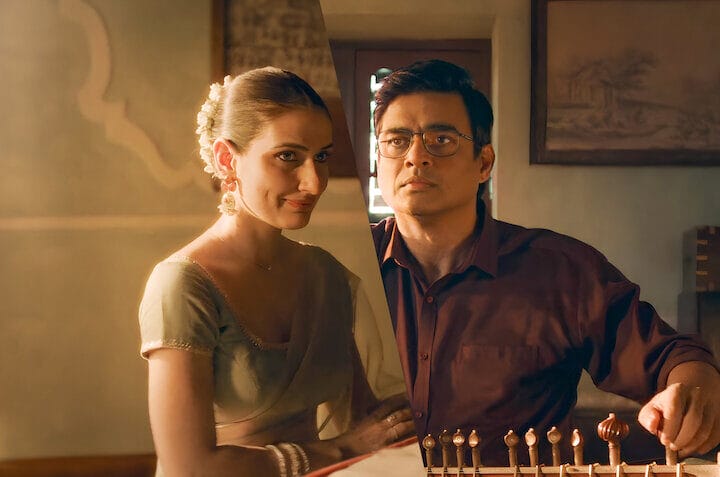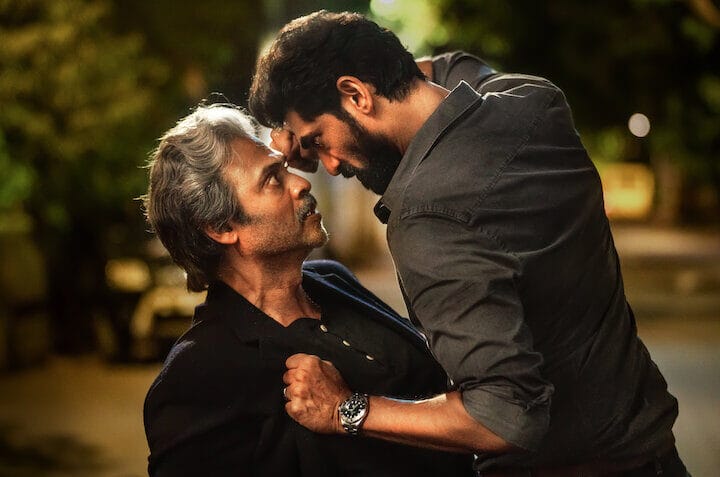The Sheena Bora case stands as a stark epitome of familial betrayal, gripping the Indian subcontinent with its complex layers of deceit, power, and murder. I still recall the shock and confusion that rippled through the nation in April 2012, when Sheena Bora, the daughter of media executive Indrani Mukerjea, vanished without a trace. The details of the case are as unsettling as they are captivating, carving a space in the annals of India’s most notorious criminal acts. As I navigate through the intricacies of this high-profile murder, I am reminded of the power dynamics and dark secrets that often lurk beneath the surface of seemingly ordinary lives, signaling why the Sheena Bora case remains relevant and deeply engrained in the collective memory.
As we delve into the chilling narrative of the Sheena Bora murder, the purpose of this article is to offer a meticulous examination of the events that unfurled from the disappearance to the consequential investigation, arrest, and trial that followed. The journey through this article will lead us through a timeline of significant milestones, including early life and family dynamics that may have foreshadowed the grim outcome. We will also explore the impact this case has had on society and its permeation into popular culture. Through a detailed recount, my aim is to provide clear insights into the Sheena Bora case, ensuring you come away with a nuanced understanding of one of India’s most confounding and discussed criminal cases.
Early Life and Family Dynamics
Sheena Bora’s early life and the dynamics within her family played a significant role in the events that led to her tragic fate. Here is a closer look at these aspects:
- Birth and Parentage: Sheena Bora was born on February 11, 1987, in Guwahati, Assam. Her parents were Siddhartha Das and Indrani Mukerjea, who later became a prominent media executive. The complexities of her birth and parentage would later become focal points in the investigation into her disappearance.
- Upbringing: Sheena and her brother Mikhail were not raised by their biological parents. Instead, they grew up in the care of their maternal grandparents in Guwahati. This separation from their mother, who moved to Kolkata for her studies, created a unique family structure that would influence the events to come.
- Reconnection with Indrani: In a twist of fate, Sheena moved to Mumbai in 2006 after learning about her mother’s whereabouts. Upon her arrival, she was introduced not as Indrani’s daughter, but as her younger sister, a pretense that would raise questions and suspicions in the wake of her disappearance.
- Education and Career: Sheena pursued her higher education at St. Xavier’s College, where she obtained a Bachelor of Arts degree between 2006 and 2009. She then took a professional role at Mumbai Metro One, operated by Reliance Infrastructure, working as an assistant manager.
- Personal Relationships: During her time in Mumbai, Sheena entered into a relationship with Rahul Mukerjea, who was, in actuality, her step-brother. This relationship, at the heart of the complex family web, would later be scrutinized in the context of the sheena bora case.
- Disappearance and Initial Claims: On April 24, 2012, Sheena Bora went missing. In the aftermath, Indrani Mukerjea claimed that Sheena had left for the United States to pursue higher studies, a statement that would later be contradicted by the grim reality of Sheena’s fate.
- Arrest and Allegations: The case took a dramatic turn in August 2015 when Indrani Mukerjea, her ex-husband Sanjeev Khanna, and driver Shyamvar Pinturam Rai were apprehended. They were charged with the abduction, murder, and subsequent disposal of Sheena Bora’s body, allegations that shocked the nation and cast a shadow over the family’s intricate dynamics.
The early life and family dynamics of Sheena Bora provide crucial context for understanding the Sheena Bora case. These elements not only shaped her personal journey but also laid the groundwork for the tragic events that would later unfold, capturing the attention of both the public and the media.
The Disappearance
Sheena Bora’s disappearance in April 2012 marked the onset of a perplexing case that would later unravel a web of deceit and familial secrets. Despite being introduced to the world as the younger sister of Indrani Mukerjea, Sheena was, in fact, her biological daughter, a truth that became a cornerstone in the investigation of the Sheena Bora case. The circumstances surrounding her vanishing were shrouded in mystery, and the initial claims made by her family members only deepened the enigma.
Timeline of Disappearance:
- April 24, 2012: Sheena Bora is last seen alive. On this day, she reportedly left her workplace and was never seen again.
- Initial Response: Following her disappearance, Indrani Mukerjea informed friends and family that Sheena had moved to the United States for further studies, a claim that would later be scrutinized and proven false.
- Lack of Immediate Investigation: Despite the odd nature of her sudden departure, no immediate investigation was launched into Sheena’s disappearance, partly due to the misleading information provided by her family.
As weeks turned into months, Sheena’s absence continued to raise questions among those who knew her, especially given the strained and complex relationships within her family. The Sheena Bora case remained dormant until a series of unexpected revelations brought it to the forefront of criminal investigations, exposing a narrative that few could have anticipated. The perplexing case of Sheena Bora’s disappearance not only captivated the nation’s attention but also highlighted the intricate layers of human relationships and the lengths to which individuals might go to conceal the truth.
Investigation and Arrest
In the months following Sheena Bora’s disappearance, the investigation into her case took several unexpected turns, revealing a saga of deception and crime that captured the nation’s attention. Here’s a detailed look at the sequence of events that unfolded during the investigation and arrest:
- Discovery and Revelation: In May 2012, a month after Sheena Bora was last seen alive, her remains were found in the Raigad district of Maharashtra. Initially unidentified, the case remained unsolved until a resignation letter purportedly from Sheena was sent to her employers by her brother Mikhail, posthumously.
- Breakthrough Arrest: The critical breakthrough in the Sheena Bora case came three years later when, in August 2015, Indrani Mukerjea’s driver, Shyamvar Rai, was apprehended for possessing illegal arms. During interrogation, Rai divulged details about Sheena Bora’s murder, leading to the arrest of Indrani Mukerjea on August 25, 2015. Subsequently, her ex-husband Sanjeev Khanna was arrested in Kolkata, marking a significant development in the case.
- Biological Father’s Claim: In a revelation that added another layer to the case, Siddhartha Das surfaced in September 2015, claiming to be Sheena’s biological father. This claim shed further light on the complex family dynamics that were central to the investigation.
- CBI Involvement: With the case’s complexity escalating, it was transferred to the Central Bureau of Investigation (CBI), which then registered an FIR against Mukerjea, Khanna, and Rai. The involvement of the CBI signaled the seriousness of the case and the need for a thorough investigation.
- Additional Arrest and Chargesheets: The investigation intensified with the arrest of Peter Mukerjea by the CBI in November 2015. The CBI later filed chargesheets against Indrani Mukerjea, Rai, and Peter Mukerjea, outlining the roles they allegedly played in the crime.
- Court Proceedings: A special CBI court charged Indrani, Peter Mukerjea, and Sanjeev Khanna with conspiracy, kidnapping, destroying evidence, and giving false information in addition to the murder of Sheena Bora. These charges marked a crucial step in the judicial process to uncover the truth behind the Sheena Bora case.
- Marital and Legal Developments: In a personal turn of events, Indrani and Peter Mukerjea’s marriage ended in October 2019, with a family court in Mumbai granting their divorce. On the legal front, Peter Mukerjea was granted bail by the Bombay High Court on February 6, 2020, while Indrani’s bail plea was rejected.
- Bail Granted: After nearly seven years of incarceration and legal battles, Indrani Mukerjea was granted bail by the Supreme Court on May 18, 2022. Her release from custody marked the latest development in the ongoing saga of the Sheena Bora case.
The investigation into the Sheena Bora murder case has been a complex web of family ties, legal challenges, and unexpected disclosures. The meticulous efforts of law enforcement and the judiciary have been pivotal in bringing to light the intricate details of this case, with each revelation adding to the public’s understanding of the events that led to Sheena Bora’s untimely death.
Trial and Public Reaction
In the ongoing legal proceedings of the Sheena Bora case, the public’s interest has been piqued by developments outside the courtroom, specifically regarding a documentary series. The following points outline the recent judicial intervention and public reaction:
- Judicial Intervention in Media Representation:
- The Bombay High Court has intervened in the release of a documentary series by Netflix titled “The Indrani Mukerjea Story: The Buried Truth.” The court has ordered a postponement of the series until further notice. This decision came after the Central Bureau of Investigation (CBI) expressed concerns that the content could potentially affect the ongoing trial.
- Scheduled for a February 23 premiere, the documentary includes interviews with key witnesses such as Mikhail Bora and Vidhie Mukerjea, which could sway public opinion or witness testimony.
- CBI’s Stance on Potential Trial Impact:
- The CBI’s request for a stay on the documentary’s release underscores the delicate nature of the trial process. As the investigating authority, the CBI is tasked with ensuring a fair trial, and any external influence could jeopardize the integrity of the legal proceedings.
- The Bombay High Court has summoned Netflix Entertainment Services India to respond to the CBI’s application, demonstrating the court’s commitment to preserving the sanctity of the trial.
- Public Reaction and Case Background:
- The Sheena Bora case has garnered significant media attention since 2015, following Shyamvar Rai’s confession to the crime. This led to the arrests of key figures, including Indrani Mukerjea, her ex-husband Sanjeev Khanna, and later her current husband Peter Mukerjea.
- Indrani’s bail in May 2022, along with the bails granted to Rai, Khanna, and Peter Mukerjea, has kept public interest alive in the case as it progresses through the legal system. The public’s reaction has been a mix of fascination and horror, given the familial ties and the gruesome nature of the murder.
- The discovery of Sheena Bora’s burnt body in the Raigad district and the subsequent unraveling of the family’s complex dynamics have made the case a subject of widespread discussion and analysis.
The trial and public reaction to the Sheena Bora case highlight the intersection of legal proceedings and media portrayal. The court’s cautious approach to the release of potentially influential content reflects the ongoing challenge of ensuring a fair trial in the age of instant information and public scrutiny.
Impact and In Popular Culture
The Sheena Bora case has reverberated through Indian society and popular culture, with its impact felt in various ways:
- Media and Public Fascination:
- The involvement of high-society figures made the Sheena Bora case commercially newsworthy, leading to intense public curiosity and widespread media coverage. This attention often crossed into the realm of public spectacle, with people eagerly consuming every update, akin to a serialized drama.
- Social profiles of those involved dictated the extent of media pursuit, often overshadowing other significant events and news stories, indicating a prioritization of sensational stories over perhaps more impactful news.
- Ethical Concerns in Journalism:
- The media’s approach to the Sheena Bora case has been subject to scrutiny and criticism. Reports frequently sidestepped the principle of presumed innocence, leading to the harassment of associated individuals, and raising ethical concerns regarding the role and responsibilities of journalism in reporting criminal cases.
- The tendency to sensationalize details and engage in speculative reporting for higher TRPs and revenue has led to debates about the state of journalism ethics and the impact of such coverage on the individuals involved and the judicial process.
- Cultural Reflection and Critique:
- The Sheena Bora case has been likened to a modern-day mythological tale, drawing people to indulge in their baser instincts of gossip and speculation. It invites debates about societal and cultural values, reflecting on how the public consumes and reacts to stories of crime and punishment within the upper echelons of society.
- The case also highlighted systemic issues, such as the police’s initial failure to act on a complaint of murder lodged three years prior to the case’s breakthrough. This gap in law enforcement response has sparked discussions on the effectiveness and biases within the criminal justice system, especially when it pertains to upper class crimes.
The Sheena Bora case, through its unfolding and the reaction it garnered, serves as a mirror to societal fascinations and the media’s role in shaping public discourse. It underscores the complex interplay between crime, media representation, and cultural consumption, prompting a reevaluation of values both within the media industry and society at large.
Throughout the exploration of the Sheena Bora case, we have journeyed through the unsettling landscapes of family secrets, manipulative power structures, and a crime that shook the foundations of Indian society. The case’s intricacies, from the early life and intertwined relationships within the Bora family to the significant milestones of investigation and trial, underscore the profound impact it has left on the collective consciousness. This reflection serves not only to catalog the chronological events but also to emphasize the undeniable truth that justice, however complex the path, remains a societal cornerstone.
The broader implications of the Sheena Bora case permeate far beyond the confines of courtroom walls, rippling into the realms of media ethics, public perception, and legal scrutiny. As the story continues to unfold, it serves as a stark reminder of the fragility of human relationships and the responsibilities of societal institutions. In the narrative of Sheena Bora’s life and untimely death, we find the impetus for ongoing dialogue on crime, punishment, and the very nature of the human condition.


















